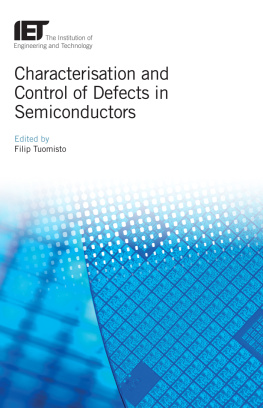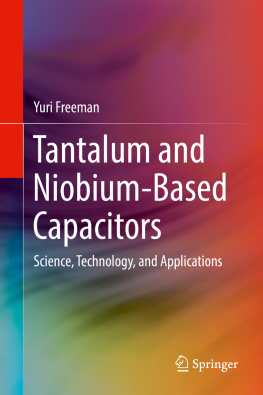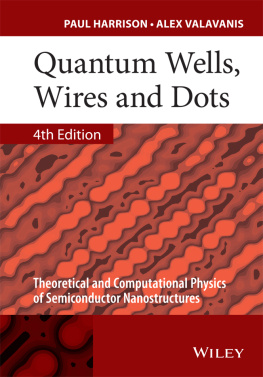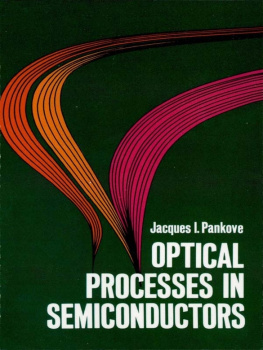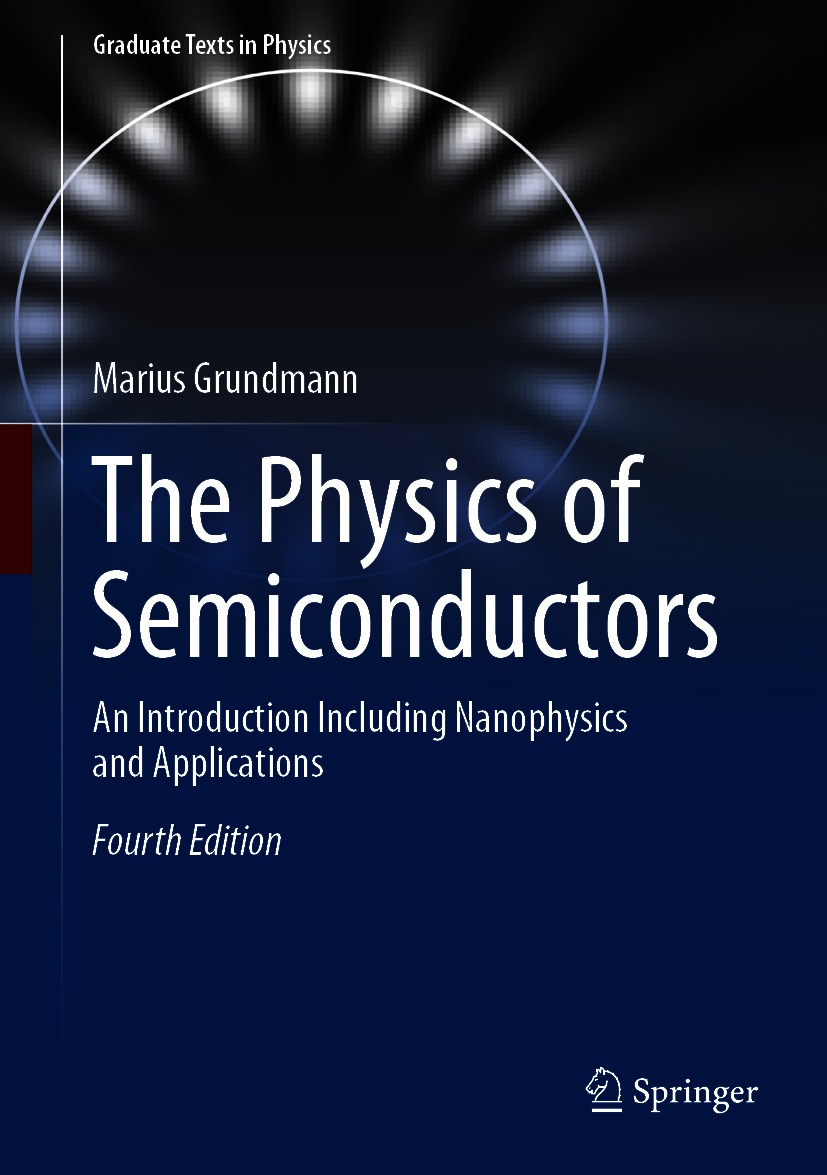Graduate Texts in Physics
Series Editors
Kurt H. Becker
NYU Polytechnic School of Engineering, Brooklyn, NY, USA
Jean-Marc Di Meglio
Matire et Systmes Complexes, Btiment Condorcet, Universit Paris Diderot, Paris, France
Morten Hjorth-Jensen
Department of Physics, Blindern, University of Oslo, Oslo, Norway
Bill Munro
NTT Basic Research Laboratories, Atsugi, Japan
William T. Rhodes
Department of Computer and Electrical Engineering and Computer Science, Florida Atlantic University, Boca Raton, FL, USA
Susan Scott
Australian National University, Acton, Australia
H. Eugene Stanley
Center for Polymer Studies, Physics Department, Boston University, Boston, MA, USA
Martin Stutzmann
Walter Schottky Institute, Technical University of Munich, Garching, Germany
Andreas Wipf
Institute of Theoretical Physics, Friedrich-Schiller-University Jena, Jena, Germany
Graduate Texts in Physics publishes core learning/teaching material for graduate- and advanced-level undergraduate courses on topics of current and emerging fields within physics, both pure and applied. These textbooks serve students at the MS- or PhD-level and their instructors as comprehensive sources of principles, definitions, derivations, experiments and applications (as relevant) for their mastery and teaching, respectively. International in scope and relevance, the textbooks correspond to course syllabi sufficiently to serve as required reading. Their didactic style, comprehensiveness and coverage of fundamental material also make them suitable as introductions or references for scientists entering, or requiring timely knowledge of, a research field. publishes core learning/teaching material for graduate- and advanced-level undergraduate courses on topics of current and emerging fields within physics, both pure and applied. These textbooks serve students at the MS- or PhD-level and their instructors as comprehensive sources of principles, definitions, derivations, experiments and applications (as relevant) for their mastery and teaching, respectively. International in scope and relevance, the textbooks correspond to course syllabi sufficiently to serve as required reading. Their didactic style, comprehensiveness and coverage of fundamental material also make them suitable as introductions or references for scientists entering, or requiring timely knowledge of, a research field.
More information about this series at http://www.springer.com/series/8431
Marius Grundmann
The Physics of Semiconductors
An Introduction Including Nanophysics and Applications
4th ed. 2021

Logo of the publisher
Marius Grundmann
Felix Bloch Institute for Solid State Physics, Universitt Leipzig, Leipzig, Germany
ISSN 1868-4513 e-ISSN 1868-4521
Graduate Texts in Physics
ISBN 978-3-030-51568-3 e-ISBN 978-3-030-51569-0
https://doi.org/10.1007/978-3-030-51569-0
Springer Nature Switzerland AG 2016, 2021
This work is subject to copyright. All rights are reserved by the Publisher, whether the whole or part of the material is concerned, specifically the rights of translation, reprinting, reuse of illustrations, recitation, broadcasting, reproduction on microfilms or in any other physical way, and transmission or information storage and retrieval, electronic adaptation, computer software, or by similar or dissimilar methodology now known or hereafter developed.
The use of general descriptive names, registered names, trademarks, service marks, etc. in this publication does not imply, even in the absence of a specific statement, that such names are exempt from the relevant protective laws and regulations and therefore free for general use.
The publisher, the authors and the editors are safe to assume that the advice and information in this book are believed to be true and accurate at the date of publication. Neither the publisher nor the authors or the editors give a warranty, expressed or implied, with respect to the material contained herein or for any errors or omissions that may have been made. The publisher remains neutral with regard to jurisdictional claims in published maps and institutional affiliations.
Cover Credit line: Whispering gallery mode in circular cavity. Image: Th. Nobis, M. Grundmann, Universitt Leipzig
This Springer imprint is published by the registered company Springer Nature Switzerland AG
The registered company address is: Gewerbestrasse 11, 6330 Cham, Switzerland
To Michelle,
Sophia Charlotte
and Isabella Rose
Preface
Semiconductor electronics is commonplace in every household. Semiconductor devices have enabled economically reasonable fiber-based optical communication, optical storage and high-frequency amplification and have recently revolutionized photography, display technology and lighting. By now solar energy harvesting with photovoltaics contributes a significant portion to the energy mix. Along with these tremendous technological developments, semiconductors have changed the way we work, communicate, entertain and think. The technological progress of semiconductor materials and devices is evolving continuously with a large worldwide effort in human and monetary capital. For students, semiconductors offer a rich and exciting field with a great tradition, offering diverse fundamental and applied topics [1] and a bright future.
This book introduces students to semiconductor physics and semiconductor devices. It brings them to the point where they can specialize and enter supervised laboratory research. It is based on the two semester semiconductor physics course taught at Universitt Leipzig in its Master of Science physics curriculum. Since the book can be followed with little or no pre-existing knowledge in solid-state physics and quantum mechanics, it is also suitable for undergraduate students. For the interested reader many additional topics are included in the book that can be covered in subsequent, more specialized courses. The material is selected to provide a balance between aspects of solid-state and semiconductor physics, the concepts of various semiconductor devices and modern applications in electronics and photonics.
The first semester contains the fundamentals of semiconductor physics (Part I, Chaps. ) is dedicated to semiconductor applications and devices that are taught in the second semester of the course. After a general and detailed discussion of various diode types and their physical mechanisms, their applications in electrical circuits, photodetectors, solar cells, light-emitting diodes and lasers are treated. Finally, bipolar and field-effect transistors including thin film transistors are discussed.
In the present text of the fourth edition many passages have been revised and updated, e.g. lead halide perovskites, dipole scattering, anisotropic dielectric function, valley polarization, Dember field, new CMOS image sensors. A new chapter is devoted to 2D semiconductors and an appendix on tight-binding theory has been added. The concept of topological properties now permeates the book; it is introduced for mechanical vibrations in the diatomic linear chain model and appears in chapters on band structure and photonic dielectric structures. Last but not least a few errors and misprints have been corrected. More than 300 additional references, some old and many brand new, have been included (compared to the third edition) and doi's for most of them are provided for easy retrieval. The references have been selected to (i) cover important historical and milestone papers, (ii) direct to reviews and topical books for further reading and (iii) give access to original literature and up-to-date research. In Fig. , a histogram of the references by year is shown. Roughly four phases of semiconductor physics and technology can be seen. Before the realization of the first transistor in 1947, only a few publications are noteworthy. Then an intense phase of understanding the physics of semiconductors and developing semiconductor technology and devices based on bulk semiconductors (mostly Ge, Si, GaAs) followed. At the end of the 1970s, a new era began with the advent of quantum wells and heterostructures, and later nanostructures (nanotubes, nanowires and quantum dots) and new materials (e.g. organic semiconductors, nitrides or graphene). Another peak develops with emerging topics such as 2D materials, topological insulators or novel amorphous semiconductors.


